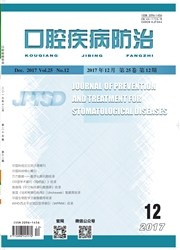

 中文摘要:
中文摘要:
儿童时期发生的颞下颌关节强直可以导致不同程度的颌面部骨骼发育障碍,并引起自卑、社交障碍等一系列心理问题,其矫治是口腔颌面外科医生面临的一大挑战。牵张成骨(distraction osteogenesis,DO)一直被国内外学者用于颞下颌关节(temporomandibular joint,TMJ)强直及其继发畸形的矫治,并取得了良好的临床效果。笔者所在科室每年大概收治50~60例TMJ强直患者,对DO技术在TMJ强直及其继发畸形矫治中的应用积累了较为丰富的临床经验。本文中,笔者对DO技术在TMJ强直及其继发畸形矫治中的优缺点及相关问题进行述评。
 英文摘要:
英文摘要:
Temporomandibular joint (TMJ) ankylosis is a joint disorder which refers to bone or fibrous adhesion of the anatomic joint components and the ensuing loss of function. When it occurs in children, it can cause secondary dentofacial deformities with physical and psychological disability. Correction of TMJ ankylosis and secondary deformities remains a great challenge for oral and maxillofacial surgeons. Distraction osteogenesis (DO) has been used for the treatment of TMJ ankylosis and secondary deformities with satisfactory outcomes. An average of 50-60 patients with TMJ ankylosis is referred to our department annually.In this review, we summarized the characteristics of DO and discussed some factors involved in the treatment of TMJ ankylosis with dentofacial deformities.
 同期刊论文项目
同期刊论文项目
 同项目期刊论文
同项目期刊论文
 期刊信息
期刊信息
